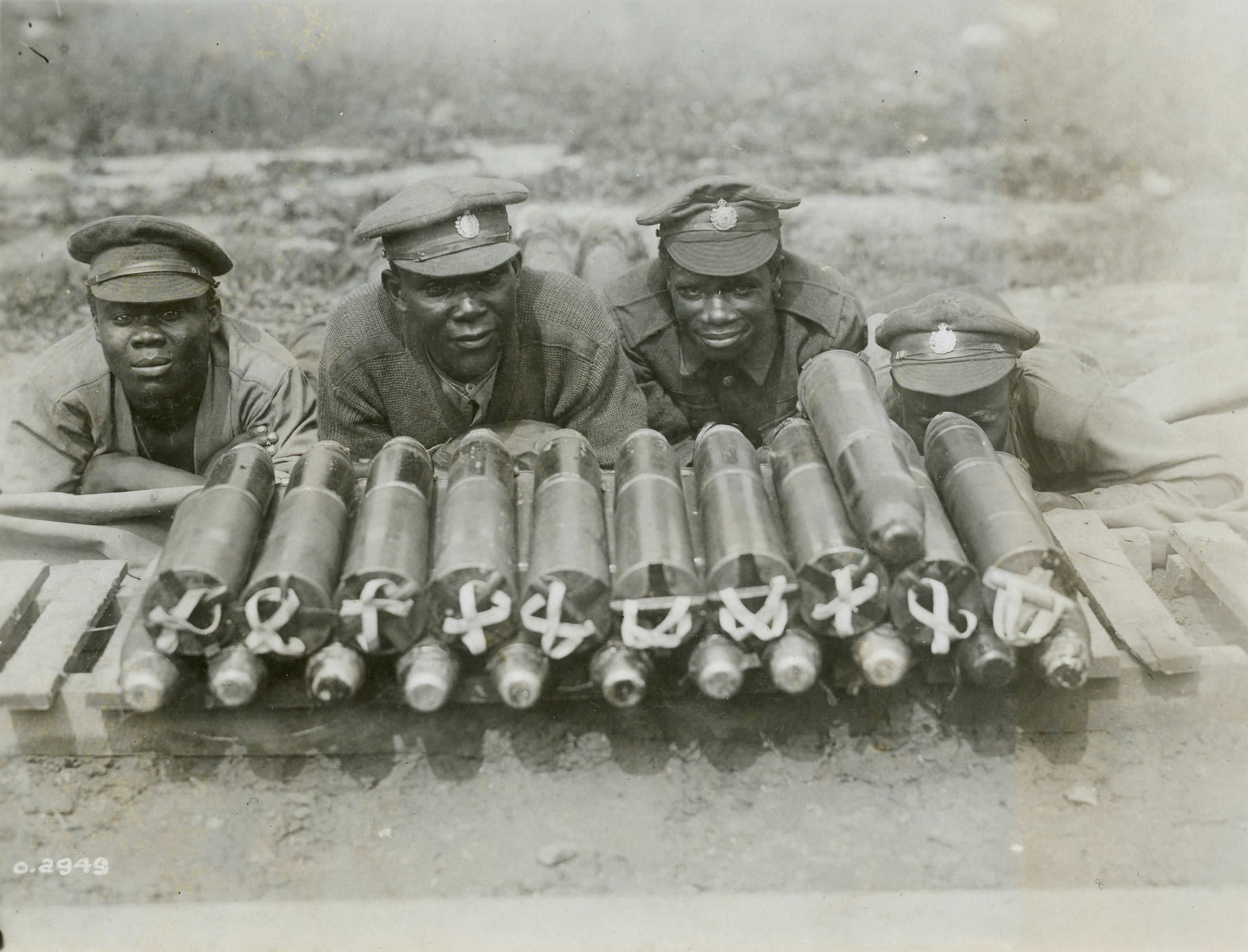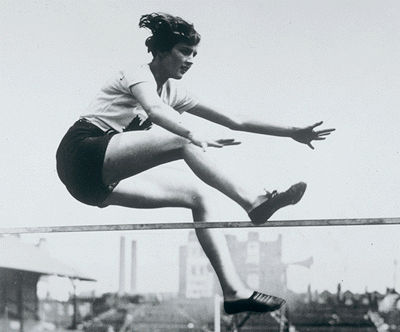Eldridge “Gus” Eatman (also known as Eastman), sprinter, soldier, entertainer (born 12 March 1880 in Zealand Station, NB; died 15 August 1960 in St. John, NB). Eldridge Eatman was a Black Canadian athlete. He was one of the fastest men in the world between 1904 and 1908. In 1905, he set a Canadian record in the 100-yard sprint with a time of 9.8 seconds. He also served with distinction in the British Army during the First World War. Eatman later became an entertainer and an activist. He has been inducted into the Saint John Sports Hall of Fame, the New Brunswick Sports Hall of Fame and the Maritime Sports Hall of Fame.
Early Years
Eldridge Eatman was the son of John L. and Jane (nee Diamond) Eatman. When he was still very young, the family moved to Saint John, New Brunswick. It was a time of great public interest in foot racing as a spectator sport. Fast runners became hometown heroes. As a boy, Eatman competed in picnic races in the Saint John area. His speed made him a local celebrity. Since his family was poor, he couldn’t afford running shoes. He later referred to himself in that early period as a “barefooted scudder.”
At that time, Black athletes were often barred from amateur sports in Canada. Few Black Canadians competed professionally, and Eatman was among the first to challenge the colour barrier. He raced for prize money, once stating, “Medals are all right, but you can’t buy running shoes with them or eat them.” Eatman once said that whenever he won a race, he was seen as “a good fellow,” but if he lost, he was the target of racist slurs.

Rise to Prominence
A sports promoter named Hazen Campbell recognized Eatman’s abilities and took him under his wing, providing him with the services of a professional trainer. Eatman won his first official match in 1902, running a 125-yard race against future Canadian baseball star Tip O’Neill at Saint John’s Shamrock Field. On 16 October 1902, Eatman won a 125 yard race against an American champion named Ed Hobbs. The local press called Eatman “the wonder and surprise of the day” and described him as “a graceful runner.” In the same competition, Eatman lost against world champion sprinter Thomas F. Keen of the United States. In October 1903, in Moncton, Eatman ran two races against local favourite James W. Humphreys, who was reputed to be the first Canadian to run the 100-yard dash in 10 seconds. Eatman lost the first race, blaming a false start, but won the rematch. That month, in Saint John, Eatman had a rematch with Keen and beat him, running the 100-yard dash in 10 seconds flat.
Over the next few years, Eatman competed successfully against the top Canadian and American runners. He became one of the best-known athletes in the country. At the Maritime Championships in 1905, he set a record for the fastest Canadian 100-yard sprint with a time of 9.8 seconds. From 1904 to 1908, Eatman was recognized as a professional world champion sprinter.
Life in United Kingdom
Eatman made several trips to the United Kingdom between 1902 and 1924. Census records show that he lived in England for a few years. He competed in numerous races against such well-known British runners as George Wallace and William Growcott, Arthur “the Crimson Flash” Postle of Australia and Irish champion Bert Day, winning some and losing others. Eatman set records for running 60 yards in 6.1 seconds and 100 yards in 9.4 seconds. At one point, he issued a challenge, inviting all comers to race him “from sixty yards to 280.” He was rumoured to have beaten a thoroughbred racehorse in a 120-yard match. He once bet all the money he had — 130 pounds sterling — on himself in a 130-yard race, which he subsequently won. He competed several times in Scotland’s Powderhall trophy race; he was unsuccessful in the 130-yard handicap but did win the 60-yard sweepstake in January 1908. That year, Eatman also won the prestigious championship 100-yard dash at the Stadium in London.
Military Service in First World War
Eatman was in New Brunswick when the First World War broke out. At that time, the Canadian Army was not accepting Black Canadian recruits, so he went to England. In 1915, he enlisted in the British Army, serving with the Northumberland Fusiliers (later the 149th Brigade of the 50th Division of the Territorial Force). A photograph of Eatman in uniform, engaged in a rifle drill, appeared on the front page of the British Daily Mirror newspaper on 6 March 1915. On 17 April 1915, while in training, he participated in a sports event at Tynemouth, an Inter-Battalion, Inter-Company Cross Country Run. Eatman arrived in France on 8 June 1915.
Eatman’s military service record was destroyed in a fire during the London Blitz in the Second World War. However, it is known that he was promoted to corporal and that he was wounded in the leg in the Battle of Loos, which took place in France during the late summer and autumn of 1915. (See also Evolution of Canada’s Shock Troops.) In late October 1915, Eatman’s battalion was transferred to Salonika (now Thessaloniki, Greece), where it remained until June 1918. Eatman was discharged on 26 June 1918.

Post-Running Career
After the war, Eatman mixed athletics with other forms of entertainment. He toured as a singer with musical troupes and was nicknamed “the sprinting songster.” Eatman was acquainted with such sports stars as heavyweight boxing champions Jack Johnson and Joe Louis and track star Jesse Owens. He also claimed to have been friends with Irish politician and revolutionary Michael Collins.
In 1937, Eatman was involved in organizing a New Brunswick/Nova Scotia cross-country marathon modelled after the famous American “Bunion Derby” of a decade earlier.
Army for Ethiopia
In 1935, using the name Eastman, Eatman championed Ethiopia’s fight against invasion by the army of Italian fascist leader Benito Mussolini. Eatman was part of an international rally by Black communities to defend Ethiopia and support Emperor Haile Selassie. Eatman appealed for both Black and white volunteers to join an Ethiopian Foreign Legion. In a newsreel filmed in Toronto, Eatman said he had no ties to any government and that his was “a Canadian outfit altogether.” He said he expected to raise 5,000 men. Although he received an enthusiastic response from Black communities in Ontario, ultimately no Canadian Foreign Legion went to Ethiopia.
Death and Legacy
Eldridge Eatman spent his last years in Saint John. On 15 August 1960, at age 80, he collapsed and died on the street while waiting for a bus. He has since been inducted into the Saint John Sports Hall of Fame (2002), the New Brunswick Sports Hall of Fame (2016) and the Maritime Sports Hall of Fame (2019). Eatman’s life story was depicted in the play We Were Here, produced by the Saint John Theatre Company in 2021.
(See also Trailblazing Black Canadian Athletes.)

 Share on Facebook
Share on Facebook Share on X
Share on X Share by Email
Share by Email Share on Google Classroom
Share on Google Classroom






